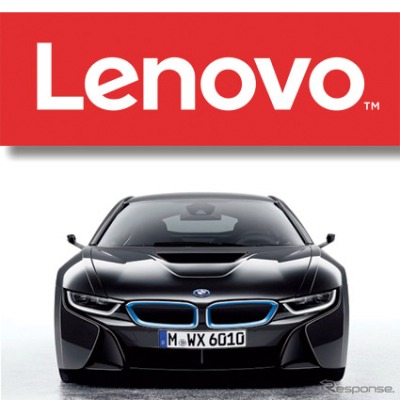
By John R. Quain & Gary M. Kaye
Editor-At-Large & Chief Content Officer ,
Tech50+ (www.tech50plus.com)
Every January, the sprawling CES 2016 consumer electronics show in Las Vegas is supposed to portend the technologies to come later this year. Judging by this year's show, we'll see several new virtual reality goggles introduced, more fitness and activity bands in stores, and a slew of smart devices for the home, including beds that monitor your sleep, remote control lights, and cameras to protect your home. At Tech50+, we listened to countless pitches, presentations, and demonstrations at the show. While we didn't, and couldn't, see everything, here are our choices for Best In Show:
Television
The search for the biggest, baddest TV at the show is a CES ritual. LG's 77 inch G6 Ultra HD Premium OLED TV was the flat out winner this year. Impressing crowds with the brightest, crispest, most colorful picture yet produced by a TV, the set uses OLED technology, which illuminates each pixel individually. The new model is a 4K Ultra HD set, offering four times the number of pixels of regular HD, and operates with the new high dynamic range (HDR) format for more color and greater brightness (it supports both HD ar10 and DolbyVision formats). The colors on the LG set are brilliant without looking artificial. It is also about a tenth of an inch thick, complemented by LG's picture-on-glass design that makes the set appear to float in the air. Price is yet to be announced.
| Lenovo’s modular ThinkPad X1 Tablet. PRIME submitted photo |
Laptop / Convertible Computers
The Lenovo ThinkPad line has long been considered the best in lightweight business laptops. Lenovo has combined its premier ThinkPad X-1 line with its popular Yoga form factor in the ThinkPad X-1 Yoga, which will be available with a stunning OLED screen. It weighs in a just 2.8 pounds, comes with a stylus that stores and charges inside the case and has up to 1TB of solid state drive storage. Price for the version with the OLED screen has not been announced; version without the OLED screen starts at $1,449.
Lenovo also launched its Yoga 900S, a lightweight 12-inch machine the company says is the thinnest on the market. It's about 1/2" thick, weighs 2.2 pounds and uses Lenovo's innovative, nearly indestructible watchband design hinge, as well as a carbon fiber case. It has an optional 2560 by 1440 display and includes Dolby Premium audio. Prices begin $1,049.
Home Appliance
In the Internet of Things, one of the biggest items in the home is the refrigerator. Samsung has plugged one into the Web with their Family Hub Refrigerator, featuring a 21.5-inch screen, electronic calendar, messaging, digital photo board, and cameras that look into the fridge so the next time you're standing in the grocery store wondering if you need to pick up cream cheese you can use your smartphone to see what's in your fridge. You can also order food online directly from the fridge's screen. Initially, you'll only be able to order from Fresh Direct and ShopRite. Pricing wasn't announced, but Samsung's Joe Stinziano told us he wanted it to be "mass market" and is expecting it to go on sale in the spring.
Automobile
Cars are now a wildly important part of CES and the area where most of the technological innovation is happening today. Among the electric and self-driving cars of the future was a BMW Mirrorless i8 Protogype sports car — sans side mirrors. The idea is to reduce drag (saving fuel) and improve visibility to improve safety. In the gullwinged i8 prototype, three cameras replace the side and rear view mirrors with images displayed on a high-definition screen replacing the interior rear view mirror. The cameras cover wider viewing angles than any mirror could possibly cover, eliminating any blind spots. The images can be electronic stitched together like a panorama, creating a live image that creates the impression there is nothing behind the driver but glass. Tie the cameras into automatic braking and parking systems, and the car won't let you put in a ding in the i8 at the shopping mall (although it still can't stop someone else from tagging you).
Health and Fitness
About the size of a small chocolate bar, the Withings Thermo is perhaps the simplest, easiest to use thermometer yet developed. It has a soft green suction cup on one end with infrared sensors and a large, color LED readout in the handle. Place the green end against your temple and it captures your temperature in about two seconds. You can assign results to a specific family member and track subsequent readings and other health information on a smart phone app. The Thermo runs on 2 AAA batteries, it's FDA approved, and will be available in a couple of months for $99.
Traditional blood pressure cuffs for either the wrist or upper arm have been pretty bulky. Now, one of the most established names in the field, Omron, showed off its Project Zero Blood Pressure Monitor device that allows users to discretely track real time blood pressure readings with a portable device, free of cuffs, wires or hoses. The wearable measures not only blood pressure, but heart rate, and integrates with fitness tracking. And because this monitor works seamlessly with the OMRON Connect App, information can be shared with a personal physician for more insightful care. Omron hopes to have FDA clearance by the spring. So far, no announced pricing.
Gary Kaye is the creator of Tech50+ (www.tech50plus.com), the leading website covering technology from the Baby Boomer perspective. Kaye has been covering high tech for more than 30 years with outlets including NBC, ABC, CNN and Fox Business. He is a regular contributor to AARP and other websites on issues regarding the nexus of technology, seniors and baby boomers.